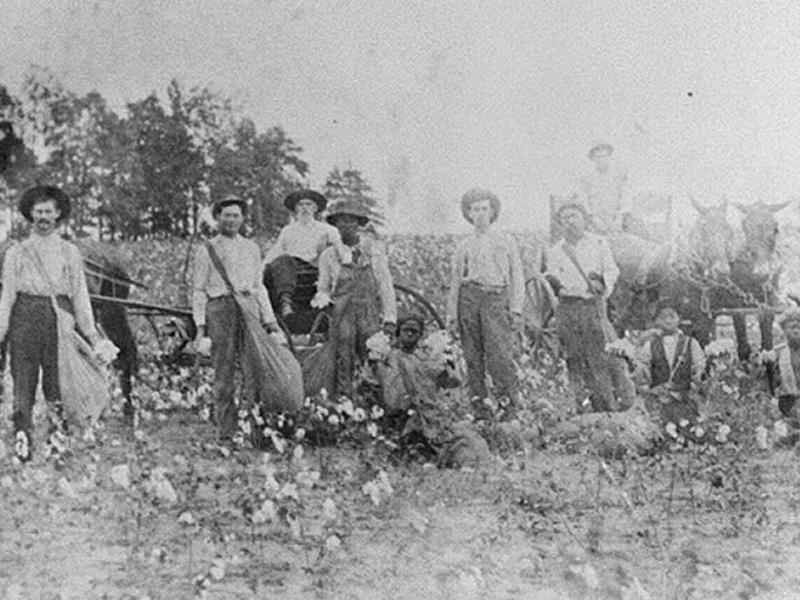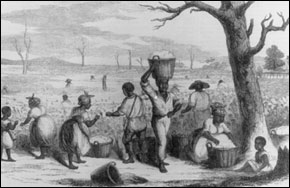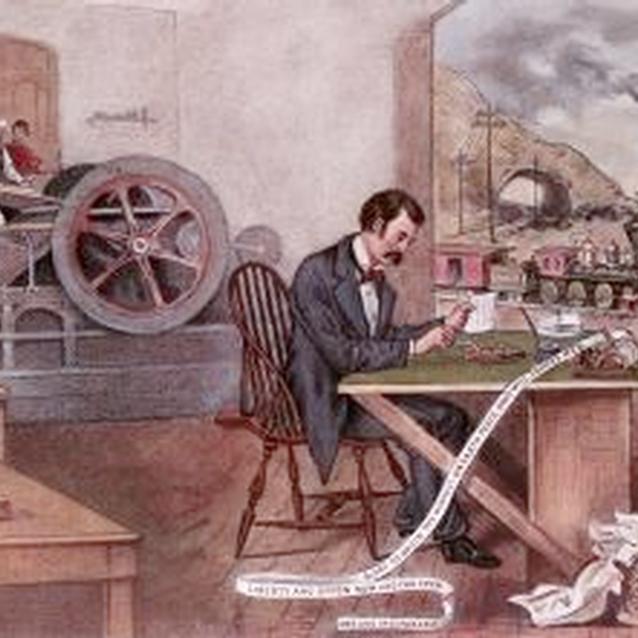5 Food Crops In Precivil War South
The work of women in the fields. At the end of the 18th century the United States had few professional writers or artists and lacked a class of patrons to subsidize the arts.

The New South Article Khan Academy
This study examines the effects of the Civil War on agriculture for both the Union and the Confederacy from 1860 to 1865 emphasizing how agriculture directly related to the war effort in each regionfor example the efforts made to produce more food for military and civilian populations.

5 food crops in precivil war south. Rice is a Kharif crop that requires high temperature heavy rainfall and high humidity for proper growth. In the 1850s novels appeared by African-American and Native American writers. The crops that are grown to feed the human population are known as food crops.
Thus Union forces had to conquer the South in order to win the war. Well-known cash crops include coffee tea cocoa cotton and sugarcane. Nov 25 2016.
These were mostly grown before 1793 and a little bit afterwards. The Civil War also helped to push Midwestern farmers closer to a more commercial model of agriculture. There are places where large numbers cannot afford to buy food.
The Southern lag in industrial development did not. The Cotton Economy in the South. In Virginia and Maryland the main cash crop was tobacco.
By the way next time you look at the nice blue color in your jeans pause for thanks to Eliza Lucas. Gradually throughout the beginning of the nineteenth century the North and South followed different paths developing into two distinct and very different regions. In the decade before the Civil War cotton prices rose more than 50 percent to 115 cents a pound.
Nature Transformed is an interactive curriculum enrichment service for teachers offering them practical help in planning courses and presenting rigorous subject matter to students. While crop diversity is at risk it is also being protected in crop collections genebanks. Without varieties of basic foods like potatoes wheat lentils and rice we will be faced with an unsustainable agricultural system and an impending threat to the worlds future food supply.
Nature Transformed explores the relationship between the ways men and women have thought about their surroundings and the ways they have acted toward them. In the South after the Civil War many black families rented land from white owners and raised cash crops such as cotton tobacco and rice. Military Map Southern US 1862 Civil War Maps.
In 1793 Eli Whitney invented the cotton gin which boosted the amount of. At the beginning of the Civil War 22 million people lived in the North and 9 million people nearly 4 million of whom were slaves lived in the South. The top four Southern crops were Rice cotton indigo and sugar.
Booming cotton prices stimulated new western. For example the economy in the South was heavily dependent on agriculture and farming. The North had more men and war materials than the South.
Compromise of 1850 -Popular Sovereignty what does this mean -Dred Scott why was he suing for freedom -Uncle Toms Cabin what is this -South Carolina what did the state do in December 1860 -Secessionists what did these people believe -Jefferson Davis who was he -Abraham Lincoln role in government -War of Attrition what is this -Cotton importance to the Southern economy. South Sudan is facing unprecedented levels of food insecurity by May this year as 65 million people 55 percent of the countrys population could face severe acute food insecurity according to the latest Integrated Food Security Phase Classification IPC analysis. This translated directly into the Union having 35 million males of military age - 18 to 45 - as compared to 1 million for the South.
Common crops included corn upland cotton sea island cotton rice sugarcane and tobacco. They depended on what crops and animals were raised on the plantation. For instance the North produced 499190041 total bushels of crops including wheat oats and more in 1850 while the South produced only 481766889 bushels of the same crops in the same year.
What were the main cash crops in the South during the Civil War. There are a number of food crops grown in the country. But during the decades before the Civil War distinctively American art and literature emerged.
Attempts to limit cotton production. Most of the fighting during the American Civil War took place on Southern soil. For instance a northern textile factory would need cotton from the.
The North also had more money more factories more horses more railroads and. Farmers supplied the army with horses pork beef and wool for uniforms. While famine has been contained since it was declared in some areas of Unity state in February 2017 the IPC warns.
The Civil War that raged across the nation from 1861 to 1865 was the violent conclusion to decades of diversification. In South Carolina and Georgia the main cash crops were indigo and rice. In part this was the result of the war strategies of both sides.
While the pace of industrialization picked up in the North in the 1850s the agricultural economy of the slave South grew if anything more entrenched. On the other hand for the North to win the Union had to be restored. The South had many large farms and was less industrialized than the North.
Or 1 pound 4 ounces of fresh or salt beef. Pre-Civil War American Culture. The agricultural structures on plantations had some basic structures in common and others that varied widely.
The southern part of the United States was vastly different from the New England area. 12 ounces of pork or bacon. It is the staple food crop in a majority of regions in the country.
As with any war troops need to be fed clothed and their supplies moved from place to place. Essays on American environmental history. The cash crops of the southern colonies included cotton tobacco rice and indigo a plant that was used to create blue dye.
Or 1 pound 4 ounces of cornmeal. According to the Revised United States Army Regulations of 1861 the daily rations for an enlisted Union soldier included. 1 pound 6 ounces of soft bread or flour.
Settlers in the South also cashed in on crops of rice and indigo both of which they exported to Europe. Fertilizer food and other items on credit until. Or 1 pound of hard bread hardtack.
The Northern free states also were proved to produce more crops than the South even with the North having considerably smaller labor force than the Souths slave industry. To win the war the South had only to survive. Thus many people worked on large plantations to grow crops.
Since the North had an industrial economy focused on manufacturing it needed the crops grown in the South to produce goods. Cotton as a diplomatic tool. They grew tobacco rice and indigo.
In 1985 it produced nearly 500 kilogrammes per head of cereals and root crops the primary sources of food1 Yet amid this abundance more than 730 million people did not eat enough to lead fully productive working lives2 There are places where too little is grown. Around 1740 17-year-old Eliza began experimenting with indigo plant seeds from the West Indies. About 75 percent of Southern males fought the war as compared to about half of Northern men.

Cotton Essential Civil War Curriculum

Monitor 150th Anniversary Civil War History

Life In The North South In Pre Civil War America Lesson For Kids Video Lesson Transcript Study Com

Industry And Economy During The Civil War U S National Park Service
15 Reconstruction The American Yawp
Komentar
Posting Komentar